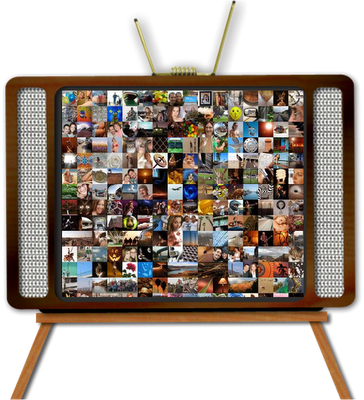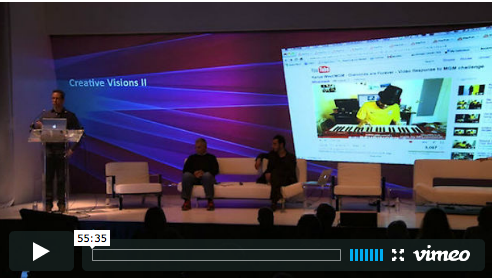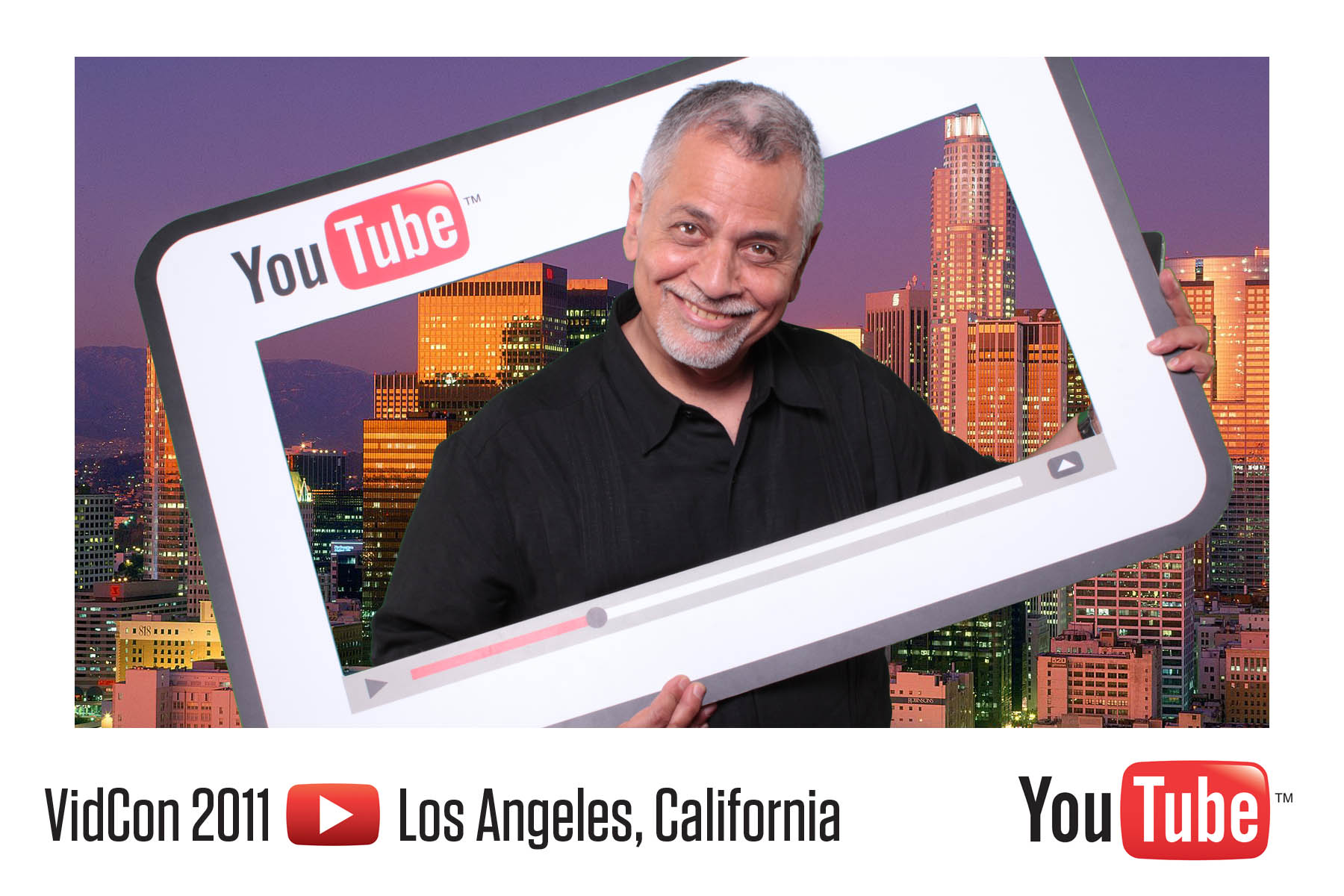The tech world is rife with trend-mongering, much of which winds up as wishful thinking or downright wrong. The future of television technology is no exception (Remember web TV, Intercast, and interactive set-top boxes?). Prognostication is a mug's game.
And, so it is with great caution that I approach the latest trio of trends -- Connected TV, Social TV and Expanded TV. Whether or not these jargony trends hurl us into the future, they reflect the challenge that every content creator (and distributor) faces today:
Consumers expect more from all of their screens.
Herein I break down these three big trends, along with their odds for future success (which I may live to regret).

Connected TV
What is it? Your TV connects to the Internet.
Why you should care: It bypasses traditional distribution middlemen. Today there are some 30 million connected TV households in the US, a number that is expected to more than triple to 137 million in three years.
How it works: Connections can be made through devices (Blu-Ray players, game consoles, Roku) or directly to Internet-enabled flat-screens. There you'll find a marketplace of TV apps, (aka over-the-top, or OTT) because they come into the home over the tops of cable and satellite payrolls.
The players: The consumer electronics companies (Samsung, Sony, LG, etc.) make the sets, many of the boxes, and the platforms where consumers find the OTT apps. (Apple, Yahoo and Google, also provide OTT services, compared here. Each manufacturer offers libraries of both paid and free apps for all kinds of stuff, including music, education, games, sports, reference, photos, social networking.
For video, Netflix is the OTT poster child, of course. Other VOD vendors include Vudu, YouTube, CinemaNow, Amazon, and Hulu, compared here. Expect other aggregators to follow. If Sundance can centralize deals with networks, why not build a branded OTT channel? If SnagFilms (owner of IndieWire) presents documentaries over the web, why not via OTT?
The odds: Today's OTT market offers new choices at a low price. But if iInternet access providers (like the cable companies) start charging by usage, and content providers start withhold content or charge more to the aggregators like Netflix, the model quickly falls apart. Both trends have led to some to doubt OTT's long-term success.
But I am intrigued whenever there’s a chance for outsiders (think: indies & their aggregators) to disrupt the status quo, especially since they have been squeezed out of cable's "500-channel universe" and the shrinking DVD market. Vendors like Accedo or Flingo can help build TV apps.

Social TV
What is it? A way to connect viewers, content, and friends, powered by mobile platforms and social networks. Not a new idea, but very powerful in the age of Facebook, Twitter and iPads.
Why you should care: Connecting media consumption to social networks produces a tsunami of data, which in turn powers personalized advertising, commerce and relationships, which creates new business models. Bye-bye mass, hello niche.
How it works: Viewers “check-in” to a show they’re watching via a mobile app. They can send their ratings and comments to friends, share on social networks, and otherwise fool around with badges, points, leaderboards, messaging, and other game-like features.
The players: Suddenly, this is a crowded field. Apps like GetGlue, Miso, Philo, and Tunerfish offer similar check-in and game-like features. IntoNow adds automatic content recognition (ACR), in which the audio signal of the show that is running triggers the app. Shazam does for that for music now, and will shortly add it for TV. Beyond TV turns your PC or Mac into a DVR. WatchPoints offers rewards for viewing. Zazum enables impulse purchases via its “SeeLoveBuy” app.
The odds: With so much VC-backed competition, it's clear that the category is hot, which may lead Facebook and Twitter to jump in. Earlier this year, Yahoo bought IntoNow just weeks after its launch . Over the long haul, hese apps must attract users, sponsors and deals with TV brands themselves, like this one with Project Runway.
IntoNow’s Adam Cahan admits, “I don’t think anyone in this space has cracked what users are drawn to.” To hear more from Cahan and other leaders, check out this video from the TV of Tomorrow show.

Expanded TV
What is it? Tablet and smartphone apps that give fans a deep dive into a specific show or network.
Why you should care: The audience is moving to mobile devices, especially hard-core fans.They will reward the shows that give them more content.
How it works: Early mobile apps for networks and TV shows offered promotion, schedules, trivia, data, galleries, clips and the like. (My favorite: TCM) When networks began streaming full episodes on websites, and then tablets, the apps provided extra content alongside the streams. (Cable got into the act with its TV Everywhere initiative, which opened the cookie jar to subscribers.). Now individual series are offering bespoke apps for the true fan.The newest of these actually synch to the live broadcast.
The players: Basically everyone in the business, especially channels, shows (and movies) that have ardent fan bases. "Our brands are all racing to create a companion experience on mobile interactive devices,” said Marc Siry of NBC Universal at the Digital Content Monetization conference in June.
Some good examples are apps for Fox’s Bones and ABC’s Grey’s Anatomy, one of the first to use Nielsen's MediaSync technology. See also, the HBO-commissioned content for Game of Thrones, available via its HBO-Go app.
The odds: Mobile devices and app stores are revolutionizing the content marketplace, forever changing our definition of TV "networks" and "shows." (and movies, too), and bringing new opportunities to satisfy the seemingly insatiable demands of audiences for more, more more. Expanded TV allows creators to broaden their pallets and expand their relationship with audiences over time.
Just TV
These three trends are enabled by technologies (Wifi, audio fingerprinting, tablets) and new business models (OTT, apps, social). As each finds its user base and category leader, it's very likely that the functions will simple become subsumed into the mainstream -- it will be "just TV".
A London start-up called Zeebox suggest such a future when the TV set will be linked to a second screen and automatically connect your viewing to the broader web. As co-founder Ernesto Schmitt told Paid Content: "We think (consumers) want TV on steroids - the ability to watch TV socially, an ability to transact, to get information, to interact. It’s the enhancement of TV.
A version of this post also appeared in Tribeca's FUTURE OF FILM BLOG, here. I am grateful for input from Dana Harris, editor of IndieWire.
To access links on this topic, check out my OTT collection on Delicious.
 Thursday, August 25, 2011 at 1:42 PM by
Thursday, August 25, 2011 at 1:42 PM by  Nick DeMartino
Nick DeMartino 
 Festivals,
Festivals,  SXSW,
SXSW,  film,
film,  interactive,
interactive,  social-tv,
social-tv,  studios in
studios in  Hollywood,
Hollywood,  Media,
Media,  conferences,
conferences,  indie,
indie,  social-media,
social-media,  technology
technology  Print Article
Print Article 





